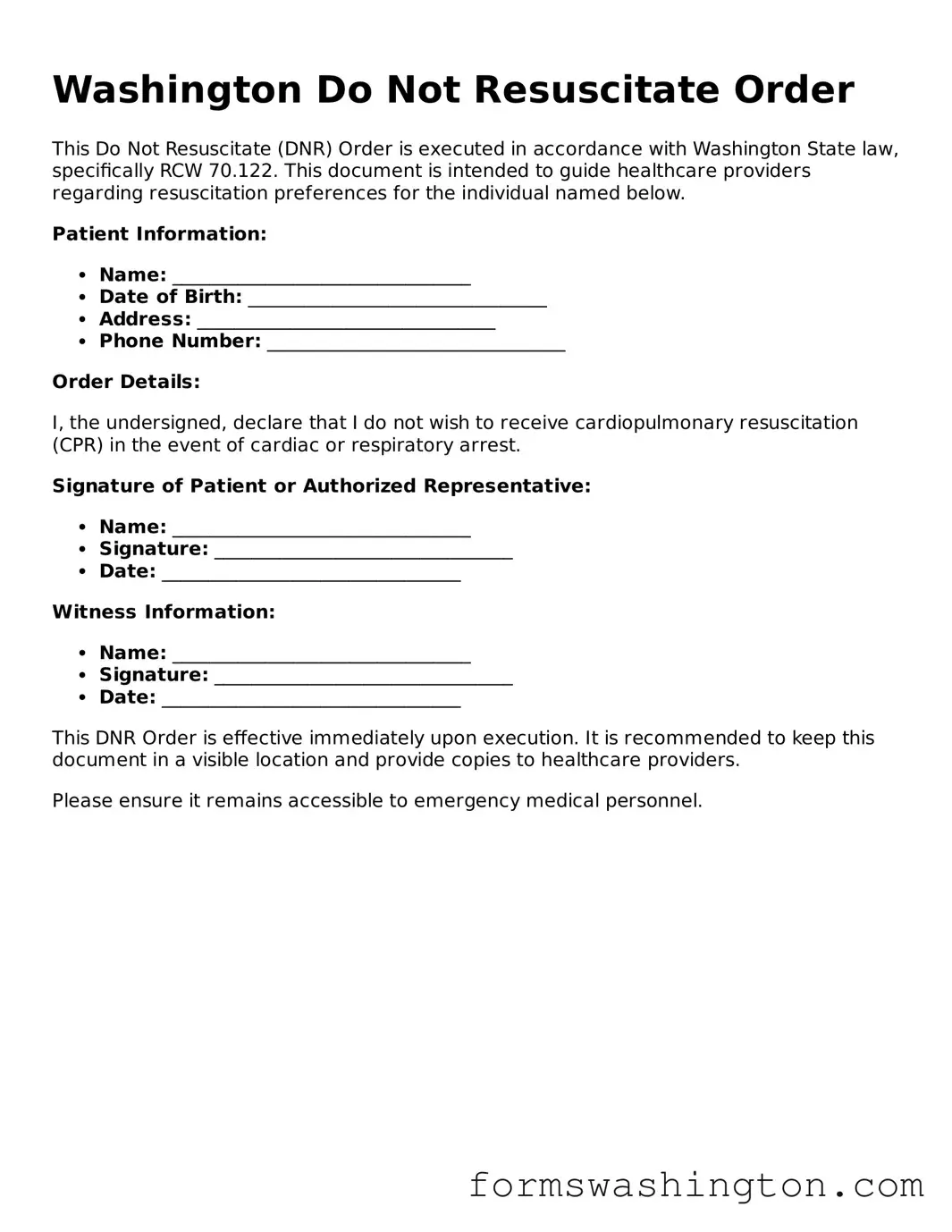The Washington Do Not Resuscitate (DNR) Order form is an essential legal document for individuals who wish to express their preferences regarding medical treatment in critical situations. Designed to ensure that a person's wishes are respected, this form specifically addresses the desire to forgo resuscitation efforts in the event of cardiac arrest or respiratory failure. It is important to understand that a DNR order does not affect other types of medical care; it solely pertains to resuscitation. The form must be completed and signed by a qualified healthcare provider, along with the patient or their legal representative. In Washington, this document is recognized by all healthcare facilities and providers, making it crucial for anyone considering end-of-life care options. Additionally, individuals can carry a copy of the DNR order with them to ensure that their wishes are honored in emergencies. Understanding the nuances of the DNR form can empower individuals to make informed decisions about their healthcare, ensuring that their preferences are clearly communicated and respected by medical personnel.
